When it comes to aquatic plants, aiming to be informed about the variety and peculiarities of the Cabombaceae family will help to switch up any water garden or aquarium. Members of the Cabombaceae family, which have unique features such as large fan-like leaves and bright-colored flowers provide ornamental beauty and act as water purifiers.
Content Table
Nevertheless, growing such plants presents some difficulties because they require certain conditions for their growth and are sensitive to changes in the conditions in which they grow.
These plants are very widespread; therefore, in this article, we will overview the most widespread Cabombaceae species including Cabomba Aquatica, Red Cabomba, and Purple Cabomba, and teach you everything about these plants’ features and how to take care of them. We also will differentiate plants such as Cabomba Furcata & Cabomba Carolinia to assist you in selecting the right one for you.
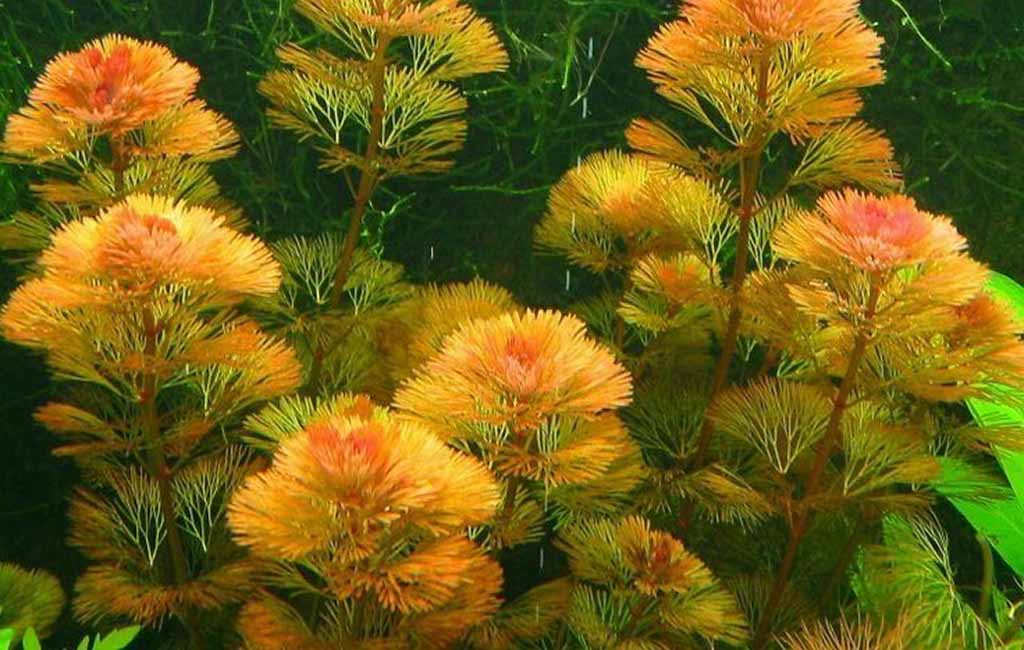
Cabomba furcata
The Characteristics of Cabombaceae
The aquatic angiospermic family known as Cabombaceae or water-shield family is found predominantly in freshwater habitats. They are frequently grown in aquariums because the foliage is ornamental, and the plants grow quickly. This family has small-divided leaves and is rather delicate looking, which makes it a perfect addition to the water environment. Here’s a look at the characteristics of some notable members of the Cabombaceae family.
Cabomba Aquatica
Cabomba Aquatica is an ornamental water plant characterized by numerous bright green, fan-like leaves that make it ideal for use in aquariums. It is found mostly in freshwater habitats but inhabits still, slow-moving water, such as that found in swamps and marsh areas. This species has a fast growth rate in high light and requires frequent pruning.
It has a thin, feather-like structure which makes it create a sort of Indigenous nest for small fishes, making it a stunning favorite among aquaculturists. Cabomba Aquatica has low to medium maintenance needs to thrive and is preferred when one wants to create a background that is green in an aquarium.
Red Cabomba (Cabomba Furcata)
Cabomba Furcata or Red Cabomba is characterized by the deep red to purple color of the foliage, which has a thin, feathery appearance. It is endemic to South America and can be propagated in tropical inland water bodies with soft, weakly alkaline water.
They prefer moderately high light levels and should not be moved frequently between shallow and deep water, which can make them tricky when growing for a beginner. This causes it to stand out in aesthetic beauty, making it ideal for usage in aquariums. However, the Red Cabomba is an artistic plant and requires good treatment to maintain its health and brightness.
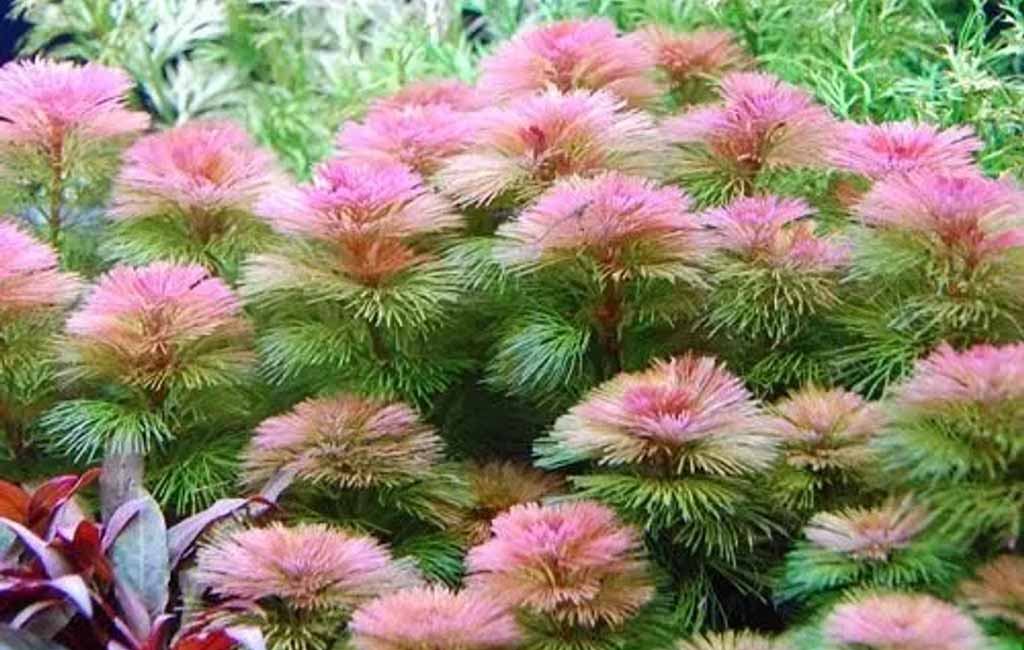
Red cabomba furcata
Cabomba Piauhyensis
Cabomba Piauhyensis is identified by its olive to reddish-brown foliage that helps to give that certain class to the aquarium. Originally from South American rivers and streams, it prefers a soft environment substrate and moderate to intense lighting.
This species has a high growth rate and can be a valuable addition as it brings variety in terms of color and the texture of the leaves. It is perfect for experienced aquarists willing to put an exquisite aquatic plant into their system. The pond has grown over the years, and continuous maintenance must be done to ensure its growth rate is checked, and water quality preserved.
Purple Cabomba
Purple Cabomba has very dark purple leaves, and the pads are slightly broader than others in the Cabomba genus. This species is native to tropical freshwater environments and requires intense light combined with soft, weakly acidic water.
This plant feels very intense, which gives the essence and drama to the aquascape designs. This plant grows very fast, so should be pruned often so that it does not congest the tank. When well taken care of, this plant can indeed be the focus or the centerpiece of any aquarium.
Yellow Cabomba
Yellow Cabomba also has light green to yellowish leave that gives brightness and contrast to aquariums. It is adapted to slow-moving fresh water and is rather fast-growing if its housing is illuminated at a moderate level. The soft leaves of this plant give aesthetic looks and act as a perfect habitat for small fishes to hide. The Yellow Cabomba isn’t difficult to care for and can make a great addition to an aquarium layout. This color also gives the ability to warm the tone up, so it can improve the visual contrast and improve the aesthetic look of the tank.
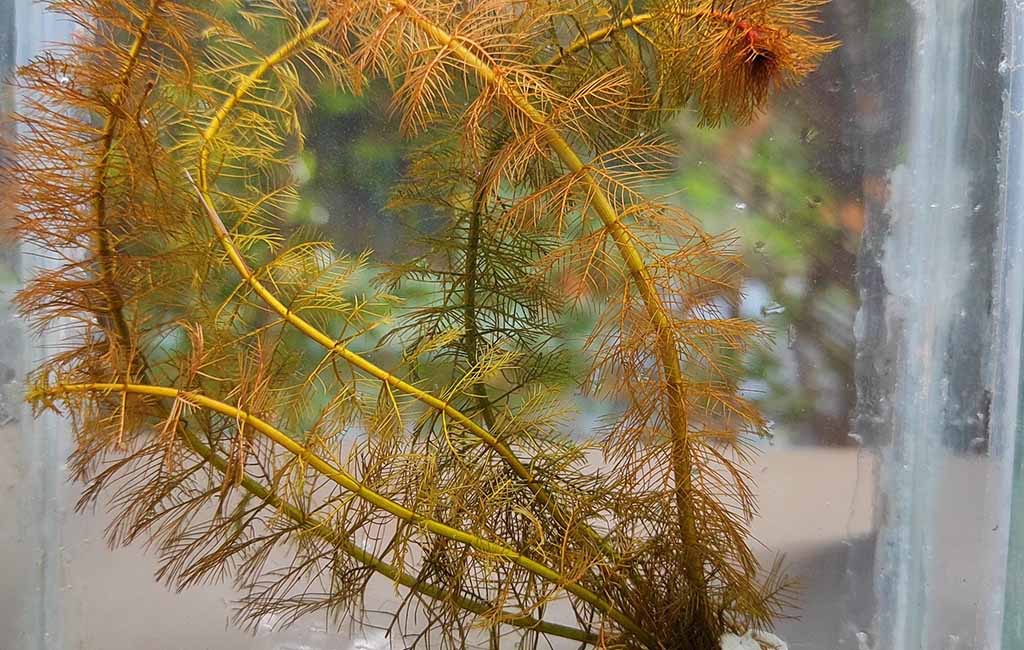
Yellow cabomba
Cabomba Caroliniana
Cabomba Caroliniana is considered a very resilient plant, with green-colored leaves and white or pale yellow blooms occasionally. Originally from North and South America, it grows very fast and may cause problems if not controlled. It is native to a wide range of freshwater habitats, and due to its hardiness is popular with first-time fish keepers. But it has to be controlled because it propagates fast and can overpower other plants in a tank. Its size, multiplied by its development, allows fish to flee and contributes to the aquarium’s ecosystem.
How to Grow Cabomba Furcata
Growing Cabomba Furcata, also known as Red Cabomba, can be rewarding due to its stunning red and purple hues, but it does require specific care to thrive. Here’s a guide on how to grow Cabomba Furcata effectively in an aquarium:
- Lighting: Cabomba Furcata requires high-intensity lighting (2-3 watts per gallon) to maintain its vibrant colors and encourage growth. Without sufficient light, its leaves may become dull, and the plant may struggle to thrive.
- Water Quality: This species prefers soft, slightly acidic water with a pH range of 5.0 to 6.8. Ensure water temperature is between 72-82°F (22-28°C). Frequent water changes are beneficial for maintaining water quality, as Cabomba Furcata is sensitive to poor water conditions.
- Nutrient-Rich Substrate: Although Cabomba Furcata can absorb nutrients through the water column, a nutrient-rich substrate with added root tabs or liquid fertilizers is ideal for robust growth. Regular dosing with iron-rich fertilizers will help sustain its vibrant colors.
- CO₂ Injection: Adding CO₂ can significantly enhance the growth rate and coloration of Cabomba Furcata. While it can survive without CO₂, the plant will flourish and display more intense colors with a CO₂ injection system.
- Maintenance: This plant grows quickly under optimal conditions, so regular pruning is necessary to prevent it from overtaking the aquarium. Trim the tops when they become too tall, and replant cuttings to propagate new plants.
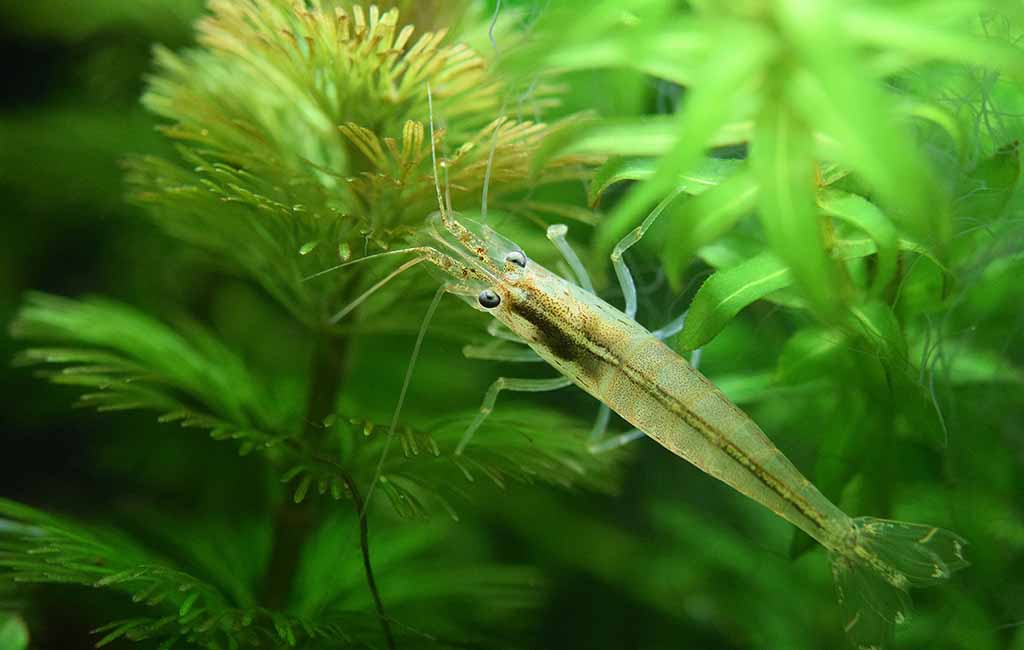
Cabomba furcata and shrimp
Cabomba Furcata vs Cabomba Carolinia
Both Cabomba Furcata and Cabomba Carolinia are popular aquarium plants, known for their delicate, feathery foliage. Here’s a comparison of the two.
| Feature | Cabomba Furcata | Cabomba Carolinia |
| Native Habitat | South America | North and South America |
| Growth Rate | Moderate to Fast | Moderate |
| Water Parameters | Soft to moderately hard water, slightly acidic to neutral pH | Soft to moderately hard water, slightly acidic to neutral pH |
| Lighting Requirements | Moderate to high-lighting | Moderate to high-lighting |
| Temperature | 22-28°C (72-82°F) | 22-28°C (72-82°F) |
| CO2 Requirements | Beneficial but not strictly necessary | Beneficial but not strictly necessary |
| Plant Size | Can reach up to 3 feet (1 meter) | Can reach up to 2 feet (0.6 meters) |
| Leaf Color | Green or reddish-brown | Green |
| Leaf Shape | Finely divided, feathery leaves | Finely divided, feathery leaves |
| Maintenance | Requires regular trimming to maintain shape | Requires regular trimming to maintain shape |
Key Differences
- Color: Cabomba Furcata can have a reddish-brown coloration, while Cabomba Carolinia is typically green.
- Growth Rate: Cabomba Furcata tends to grow faster than Cabomba Carolinia.
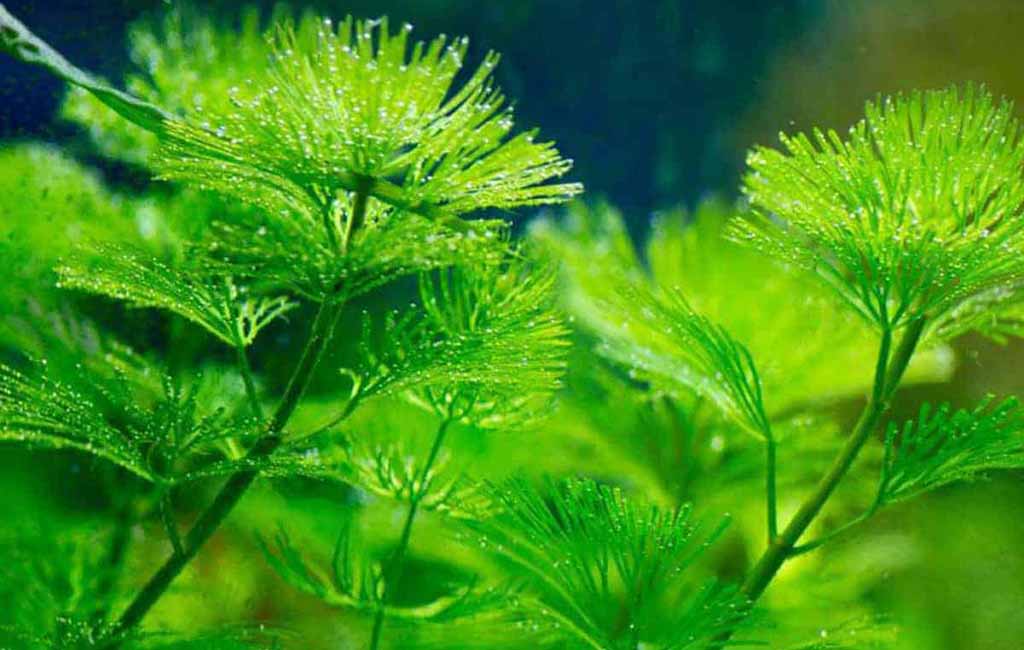
Cabomba aquatica
The Last Word
Gardening with plants of the Cabombaceae family is a great opportunity to fill an aquatic garden or an aquarium with the representatives of this family. , the popular Cabomba fistulosa, or the Red Cabomba, is a submersed plant with reddish-brown stems and dark green glossy leaves, while the Cabomba Caroliniana is versatile and easy to grow. Knowing their characteristics and requirements, one can establish these sensitive and beautiful plants and thus turn the water area into a rich environment.


Leave a comment